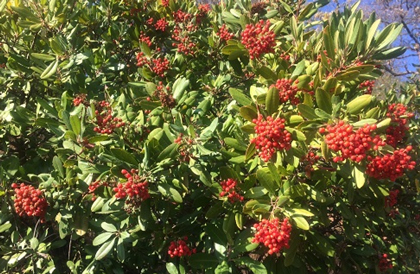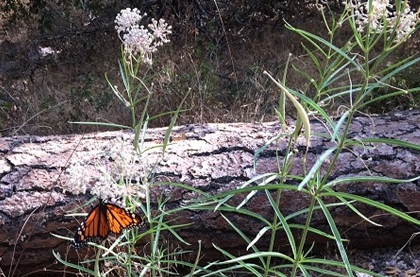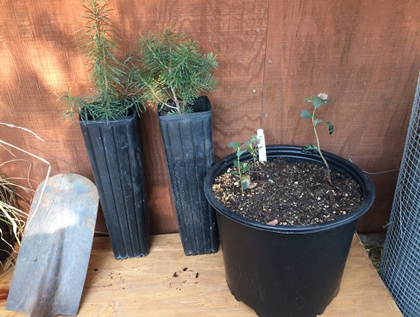 October 22, 2020 - By Ron Allen (UC Master Gardener, Mariposa) - Fall is the time to plant California natives. The weather is cooler, the first soaking rains are imminent, and yet there is still plenty of good sunlight. These factors make for good initial foliage growth and root development.
October 22, 2020 - By Ron Allen (UC Master Gardener, Mariposa) - Fall is the time to plant California natives. The weather is cooler, the first soaking rains are imminent, and yet there is still plenty of good sunlight. These factors make for good initial foliage growth and root development.
The motivation for adding native plants comes down to one thing: water. Mariposa County enjoys a somewhat hot, but generally Mediterranean climate; we have cool winters, wet springs, and dry summers. California natives are adapted to our long, dry summers. Filling your garden and landscape with natives saves on irrigation expenses once the plants are established. Also, native plants are adapted to local soil types and are resistant to local plant pathogens, insect pests, and  herbivores. By gardening with native plants, you will save again on insecticides, soil amendments, deer screens, rodent traps, etc.
herbivores. By gardening with native plants, you will save again on insecticides, soil amendments, deer screens, rodent traps, etc.
(Pictured) Toyon, with red berries.
It’s easy to get started growing California natives. First, make a survey of your site. Take an inventory of plants already present and try to figure out how to complement them. Choose plants that are adapted and grow well in your local ecological niche. This can depend upon your aesthetic and goals. Do you want attractive ornamental natives? Do you lean toward supporting pollinators? Maybe fire resistance or bank stabilization is key? Please feel free to call our UC Master Gardener Helpline in Mariposa County for suggestions.
(Pictured) Narrowleaf Milkweed, with butterfly.
If you want a simple approach, you can scatter native annual wildflower seeds, such as California Poppy. If you’re keen on helping pollinators--and the monarch butterfly in particular--then set down some milkweeds in the Asclepias genus. These perennials are the only plants upon which monarchs lay their eggs. Good examples are the Narrowleaf and Showy Milkweeds. A great choice among shrubs is the Toyon, an attractive evergreen that can become a small tree. In the summer it is covered with creamy white flowers, drawing bees and butterflies. In the fall, it produces bright red berries that attract birds. It is very fire resistant, and it’s one shrub that you can plant close to structures.
(Pictured) Douglas Fir seedlings.
If your landscaping plans are ambitious, and you’re at an elevation of 3,000 feet or more, you can try planting Douglas Fir seedlings. An excellent companion for these conifers is the Canyon Live Oak whose roots support an ectomycorrhizal fungus beneficial to young Douglas fir growth.
For assistance, contact our Helpline at (209) 966-7078 or at mgmariposa@ucdavis.edu. We are currently unable to take samples or meet with you in person but welcome pictures.
The U.C. Master Gardener Helpline is staffed; Thursdays from 2:00 p.m. - 5:00 p.m.
Serving Mariposa County, including Greeley Hill, Coulterville and Lake Don Pedro
Please contact the helpline, or leave a message by phone at: (209) 966-7078
By email (send photos and questions for researched answers) to: mgmariposa@ucdavis.edu
For further gardening information and event announcements, please visit: UCMG website: http://cemariposa.ucanr.edu/Master_Gardener
Follow us on Facebook at: https://www.facebook.com/mariposamastergardeners
Master Gardener Office Location:
UC Cooperative Extension Office,
5009 Fairgrounds Road
Mariposa, CA 95338
Phone: (209) 966-2417
Email: mgmariposa@ucdavis.edu
Website: http://cemariposa.ucanr.edu/Master_Gardener
Visit the YouTube channel at UCCE Mariposa.
